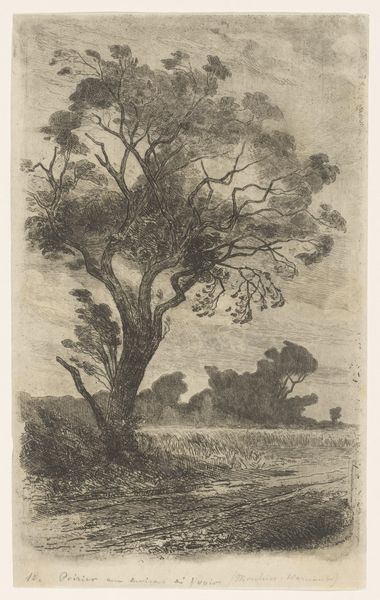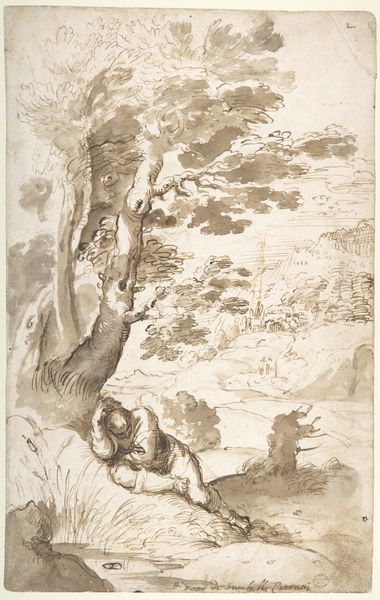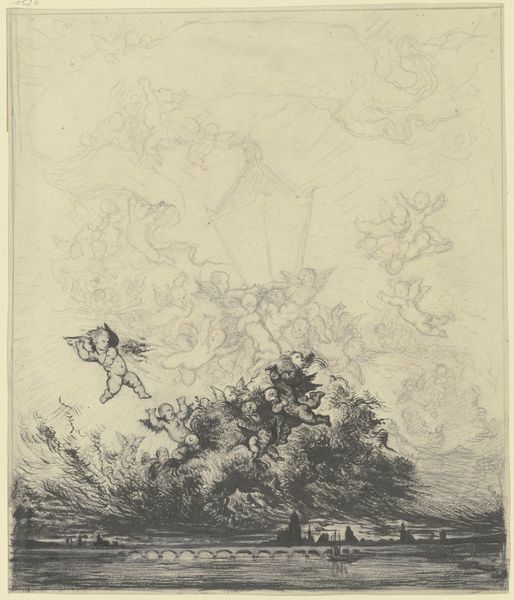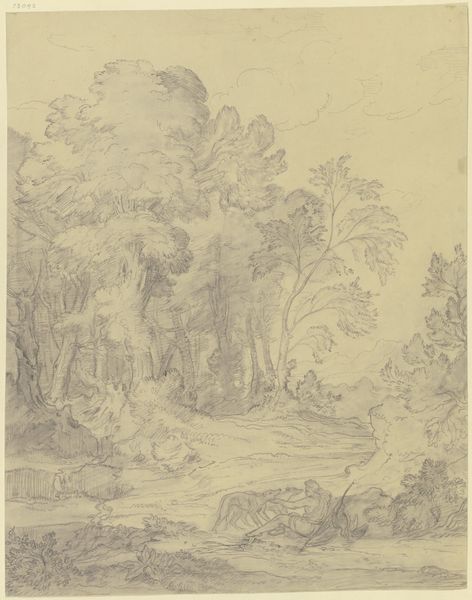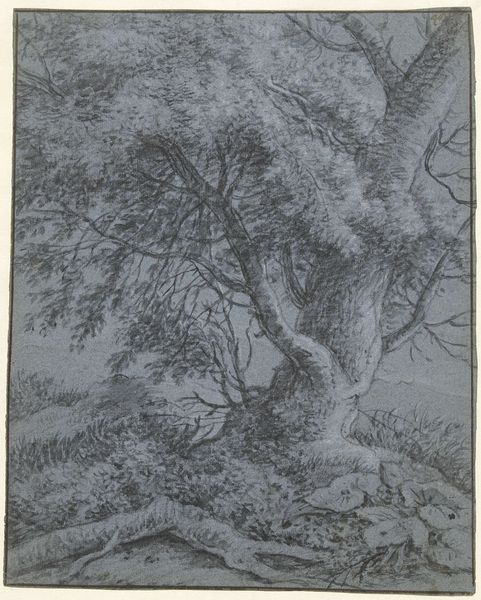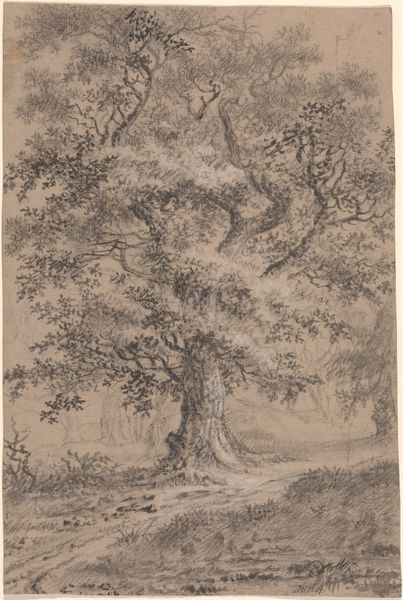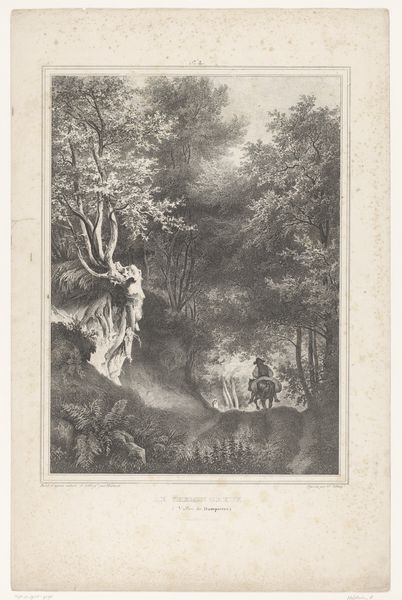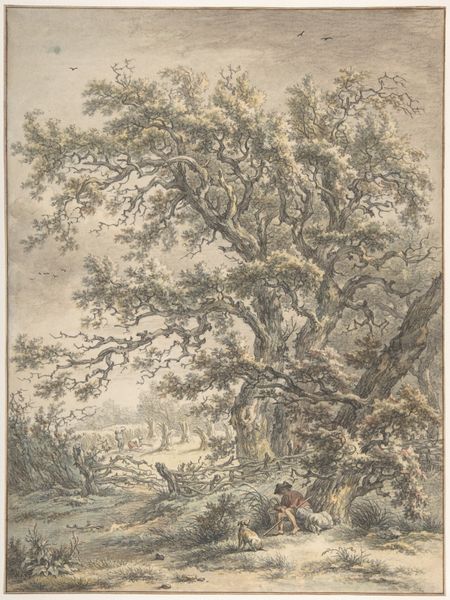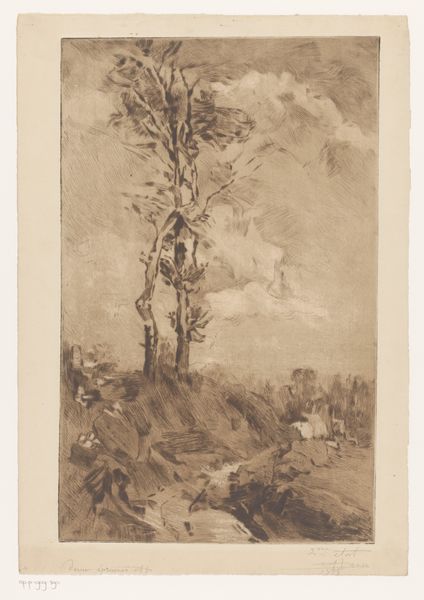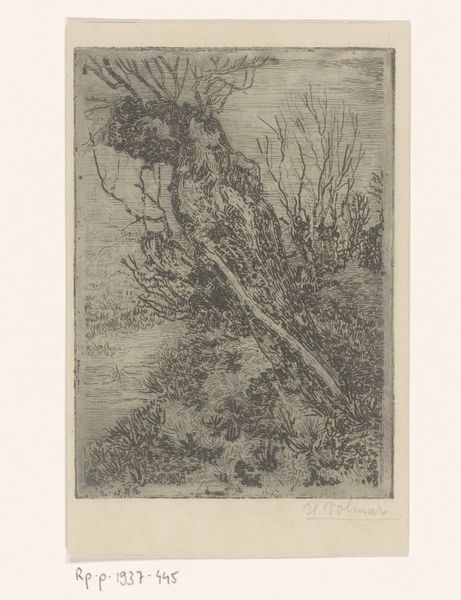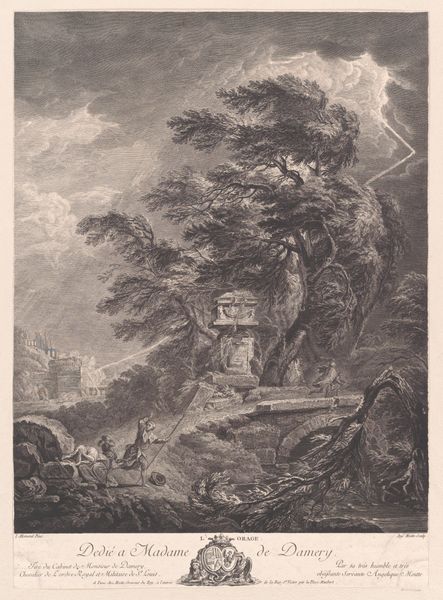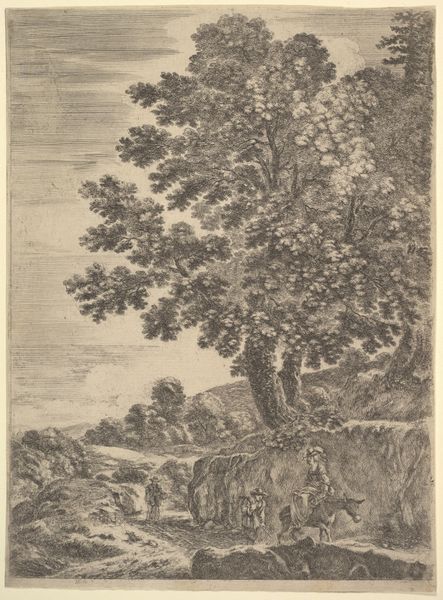
drawing, paper, ink
#
drawing
#
baroque
#
landscape
#
paper
#
ink
#
genre-painting
#
academic-art
#
realism
Dimensions: height 431 mm, width 350 mm
Copyright: Rijks Museum: Open Domain
Curator: What strikes me most immediately is the somber mood of this 18th-century landscape by P. Pfeiffers, rendered in ink on paper. It’s titled "Landschap met twee figuren in een wagen," or "Landscape with two figures in a wagon". There’s something almost melancholic about it. Editor: Indeed. Note the palpable textures achieved with simple ink and paper, echoing labor and materiality beyond aesthetics. How were inks manufactured during that period? What specific types of paper did Pfeiffers utilize? Knowing those material facts roots it more concretely in its production. Curator: It evokes notions of labor itself. These two figures in their wagon, set against this almost oppressive landscape, it gives off vibes about work, the road, and transit, perhaps the cycle of survival. There’s almost no levity here. What might the narrative suggest in terms of social commentary, and lived experiences, given that Pfeiffers work frequently depicts peasantry of the Dutch countryside? Editor: Precisely, and what's compelling is that Pfeiffers created this with very deliberate methods. The academic and realist styles merging here show a skilled hand. The very creation of 'genre painting' elevates common themes in order to validate experiences that are far beyond the elites in control. How did the paper's production influence accessibility and impact art consumption in Pfeiffers' era? Were such renderings political? Curator: I see the remnants of possibly a castle structure off in the background too. Juxtaposed against those imposing trees, it gives this feeling of the withering of one societal class versus another—or the eternal battle of nature versus man and man’s accomplishments. It's a stark scene! And given the themes often highlighted in Dutch art... could this be interpreted to talk about society on a global stage at the time? Editor: Consider the impact on global audiences. The piece uses its materials to communicate beyond just picturesque scenery; its a visualization of its production context. These figures, that wagon, this all embodies specific realities. Art like this becomes integral to broader intersectional stories defining its era—identity, politics and economic disparity. Curator: True enough. Knowing how landscapes influenced the perception of ownership and entitlement in land cultivation tells much more to contemporary audiences. This is no mere landscape... Editor: Exactly. Thinking about what paper represents itself in the context of historical and artistic process informs how we digest Pfeiffers' statements about art. It is also a product that has a story beyond the final application, too.
Comments
No comments
Be the first to comment and join the conversation on the ultimate creative platform.
